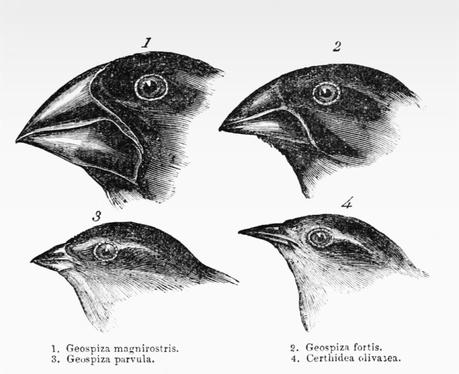
The concept of evolution is very useful as it applies to cancer, because it forms a paradigm of understanding that simple genetics cannot match. Charles Darwin, studying animals in the idyllic Galapagos island formulated the theory of evolution by natural selection, which was revolutionary at the time he published it in his book On the Origin of Species (1859). According to legend, he had noticed that the shape and size of the beak of a finch varied according to the food source.
For example, long, pointy beaks were great for eating fruit, whereas the shorter thicker beaks were good for eating seeds off the ground. He reasoned that this could not simply be a coincidence. Instead, he postulated that there was a process of natural selection going on here.
Just as with humans, there are those who are shorter or taller, muscular or lean, fatter or thinner, blue or brown eyes. Within a population of birds, there are those with longer and shorter beaks, and thinner and thicker beaks. If the main food source is fruit, then those with longer pointier beaks had a survival advantage and would reproduce more often. Over time, most of the birds would have long pointy beaks. The opposite happens if the main food source is seeds. In humans, we see that people in northern Europe tend to have very fair skin, which is better adapted to the weak sunlight compared to the dark skin of native Africans.
While 'genetic mutations' is the proximate cause of this natural selection, the environment is ultimately what guides the mutation. What is important is not the specific genetic mutation that led to long pointy beaks, but the environmental condition that favored the selection of long pointy beaks. There are many different mutations that may cause the same long pointy beak, but cataloging these various mutations does not lead to understanding of why these beaks developed. It was not a random collection of mutations that happened to create the long pointy beak.
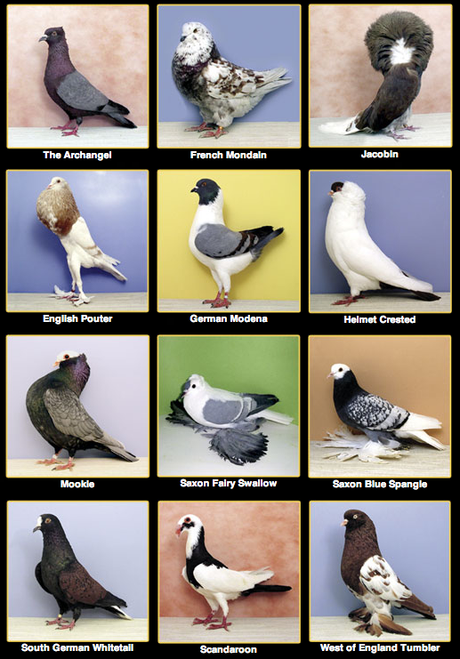
Artificial selection
This story of Darwin and the finches (which may have been tangers) may or may not be true, but it led him to look more closely at an artificial model of a similar phenomenon. Instead of natural selection, he used artificial selection.
Pigeons (actually Rock Doves) were domesticated many thousands of years ago, but in the 1800s there were pigeon fanciers that would breed these birds to look a certain way.
If a breeder wanted a very white pigeon, he would breed together mostly pigeons of very light coloration, and eventually, he would get a white pigeon. If he wanted one with huge feathers around the head, he would breed together birds with similar features to those he wished and eventually, it would result.
This form of artificial selection has been going on since the dawn on humanity. If you wanted cows that gave a lot of milk, you would breed together the most prolific milk producing cows over and over over many generations. Eventually, you got a Holstein cow, with its familiar black and white pattern. If you wanted tasty meat (with a lot of marbling) you eventually got Angus beef.
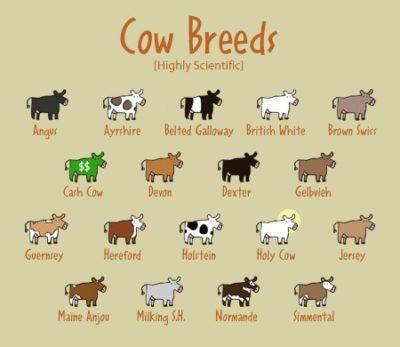
In this case, there was not natural selection, but artificial, man-made selection for one or another trait of beef or bird. It was no 'random mutation' that created the Holstein cow, but selective pressure based upon milk production. The 'mutations' that produced more and more milk were bred together, and the others became beef stew.
Similar environments, similar mutations
What is important, however, is not that different species result from genetic mutations. This is a given. What is important is what is driving the mutation towards the end result. If we select those with more milk production, we drive mutations that lend themselves to milk production. If you have similar environments, you may end up with similar mutations.
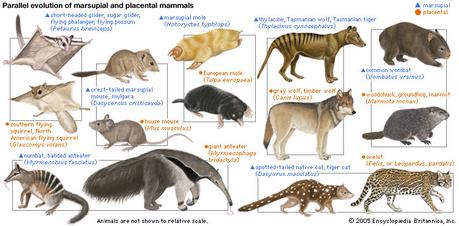
This concept in biology is known as convergent evolution. Two completely different species which develop in similar environments may eventually look like twins. The classic example are between species in Australia and North America. The mammals in North America are genetically unrelated to the marsupials in Australia, but look how closely they resemble each other. In both cases, flying squirrels developed completely independently. Australia is an island, completely separated from North American, but similar environments led to similar selective pressures and the development of similar features. So there are marsupial counterparts to moles, wolves, anteaters etc.
Once again, it is the selective pressure that drives the mutations that survive best. It would be completely preposterous to say that flying squirrels develop from a completely random 200 mutations in the genes of a squirrel and hey, by coincidence the exact same thing happened in Australia. The key is to look at the selection pressure. Living among the tree canopy, there is a survival advantage for squirrels to develop the ability to glide. Thus, in both North America and Australia, you see similar flying squirrels. However, the specific genetic mutation that caused these changes are completely different. Knowing the environmental pressure that drove selection of these mutations is far more important.
There is nothing random about cancer's mutations because they all develop the same features.
Now let's go back to the cancer. We know that all cancers share similar features, the so-called Hallmarks of Cancer (unregulated growth, angiogenesis etc). While you may have one breast cancer with one set of mutations, you have a completely different set of mutations that looks exactly the same as the first. Clearly this is a case of convergent mutation. If mutations were truly random, then one set of mutations may have unlimited growth (cancer) where the next may glow in the dark. There is nothing random about cancer's mutations because they all develop the same features.So the cogent question is not what particular mutations are underlying cancer, down to the minute pathway details of the particular oncogene. This is the downfall of cancer research. Everybody is focused on the nitty gritty of the particular gene. All research focuses on detecting the genetic abnormality without understand what is selecting those mutations. The 45 year war on cancer has become nothing but a giant exercise in cataloging the millions of possible ways that genes may mutate.

The most famous cancer related gene p53, was discovered in 1979. There have been 65,000 scientific papers written on this gene alone. At an conservative cost of $100,000 per paper (this is likely way, way too low) this research effort myopically focused on random gene mutations has cost $6.5 billion. Holy Shittake Mushrooms. That billion with a B. 75 million people have p53 related cancers since the time of p53's discovery. Yet despite this enormous cost, both in dollars and human suffering has produced a grand total of zero FDA approved treatments based on this expensive knowledge. Shut the front door. I could heap more scorn onto the Somatic Mutation Theory, but I'll spare you. We are losing the forest for the trees. We're looking so closely at the specific genetic mutations, we can't look at why these genes are mutating to produce cancer. Look, tree. Look, another tree. Look, another tree. I don't understand what this 'forest' thing they're always talking about.
What is driving the mutations?
The key is to look at what actually is driving those mutations, not the mutations themselves. What is causing cancer to become, well, cancer? This is really the same question as looking at the proximate versus the ultimate cause. These cancer cells are being selected to survive, when in truth, they should be dead. It cannot be random, because multiple different mutations converge upon the same phenotype. That is - all cancers look alike on the surface, but genetically, they are all different, just as the marsupial flying squirrel is completely genetically different from the mammalian one, but look exactly the same.
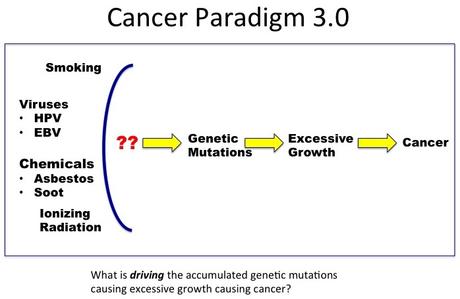
Looking at cancer through an evolutionary lens is perhaps the most helpful way of perceiving it. Cancer as unbridled growth was Cancer Paradigm 1.0. This lasted up to about the 1960 or 1970s, when an explosion of knowledge in molecular biology forced the view of cancer to a genetic one. Cancer as collection of random mutations causing unbridled growth was Cancer Paradigm 2.0. This lasted from the 1970s to approximately 2010s although there are still some diehards who believe it today. The Cancer Genome Atlas was the final bloody knife in the bowels of this somatic mutation theory, tearing it painfully and irrevocably apart until no serious scientist could use it.
Now, with an evolutionary lens, we peel back the onion of truth one more layer to see what is driving those mutations. That is Cancer Paradigm 3.0. Something is driving the mutations that are driving the unbridled growth of cancer. That something increasing looks to be mitochondrial damage and metabolic health.
Do you want to read more by Dr. Fung? Here are his most popular posts about cancer:

